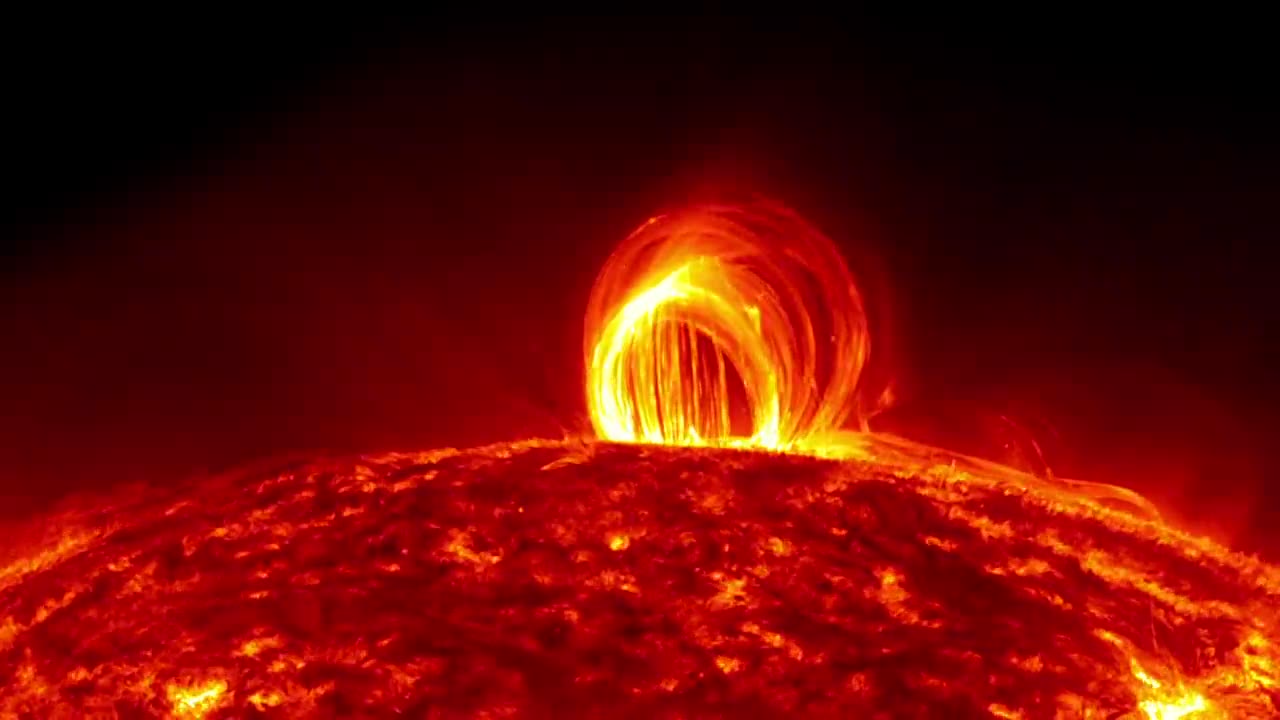Premium Only Content

Sun's Spiraling Fiery Rainstorm
Eruptive occurrences on the sun exhibit remarkable diversity. Some instances involve solitary solar flares, while others entail an additional expulsion of solar material referred to as a coronal mass ejection (CME). Yet, certain events showcase intricate mobile formations linked to fluctuations in magnetic field lines, creating loops that extend into the sun's outer atmosphere, the corona.
On the date of July 19, 2012, a solar outburst transpired that encompassed all three of these phenomena. Initially, a moderately potent solar flare erupted near the sun's lower right limb, emitting light and radiation into space. Subsequently, a CME surged outward towards the right, propelling material into the interstellar expanse. To conclude this solar spectacle, an awe-inspiring manifestation of magnetic activity emerged, commonly known as coronal rain.
Throughout the ensuing day, the intensely hot plasma present in the corona underwent cooling and condensation along robust magnetic fields within the designated area. While magnetic fields themselves are invisible, the charged plasma obediently traversed these lines, revealing its presence vividly through the extreme ultraviolet wavelength of 304 Angstroms. This wavelength highlights matter at a temperature of approximately 50,000 Kelvin. This dynamic plasma behaves as a tracer, affording scientists the opportunity to observe the intricate choreography of magnetic fields on the sun, as it gradually descends back to the sun's surface.
The captivating footage showcased in this video compilation was captured by the AIA instrument aboard the Solar Dynamics Observatory. The observatory collected individual frames at a rate of one every 12 seconds, and the resulting video playback maintains a speed of 30 frames per second. Thus, each second depicted in the video corresponds to a span of 6 real-time minutes. The video encapsulates the time span from 12:30 a.m. EDT to 10:00 p.m. EDT on July 19, 2012.
-
 9:40
9:40
Tactical Advisor
7 hours agoBest Home Defense Shotgun Build | Genesis Gen 12
4.4K -
 56:44
56:44
VSiNLive
3 hours ago $2.25 earnedFollow the Money with Mitch Moss & Pauly Howard | Hour 1
34K1 -
 1:05:48
1:05:48
The Amber May Show
7 hours ago $1.06 earnedBig Balls | You Know It's Bad When Legacy Media Reports On Big Balls | Sam Anthony
13.3K3 -
 LIVE
LIVE
SoniCentric
1 day agoEnjoy a COZY Valentine's Day Escape to Paris with the BEST blend of Romantic Music
122 watching -
 1:59:52
1:59:52
Revenge of the Cis
5 hours agoEpisode 1447: Love Train
45K3 -
 1:03:34
1:03:34
In The Litter Box w/ Jewels & Catturd
1 day agoCONFIRM KASH NOW! | In the Litter Box w/ Jewels & Catturd – Ep. 742 – 2/14/2025
67.6K51 -
 13:38
13:38
Simply Bitcoin
12 hours ago $4.94 earnedFED’s Worst NIGHTMARE Just Got WORSE | $13M Bitcoin is Coming!
81K6 -
 10:25
10:25
Megyn Kelly
1 day agoNew Video and Details Emerge Showing "Serial Fraudster" Blake Lively's Past Actions, with Ruthless
73.4K13 -
 1:21:04
1:21:04
Twins Pod
17 hours agoElon Took Away His X Verification, I Wonder Why... | Twins Pod - Episode 52 - Jake Shields
72.1K14 -
 6:01:44
6:01:44
bltgamers
10 hours ago🟢LIVE -Tomb Raider Adventure on Valentine's Day
27.9K3